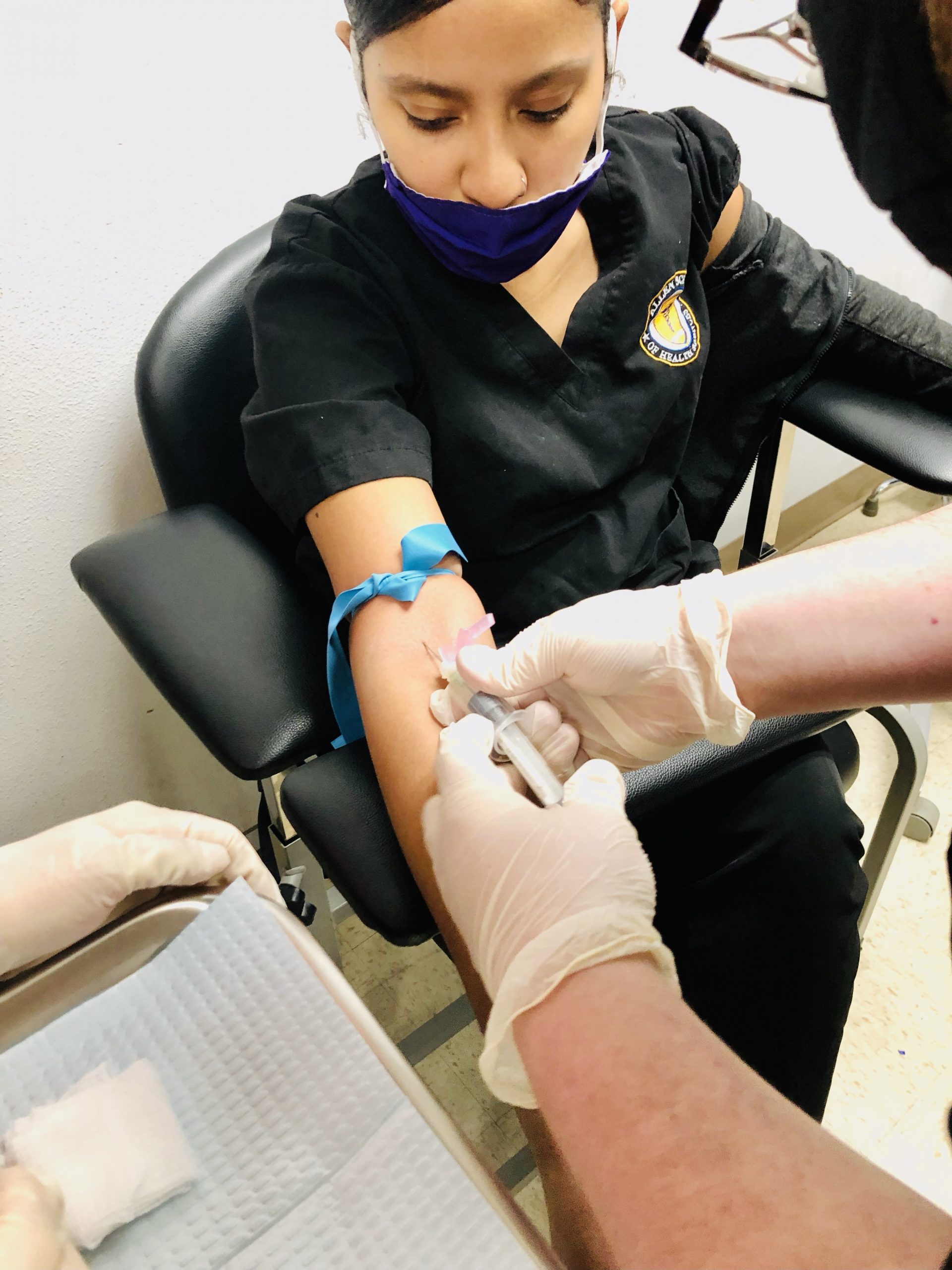
Medical testing is often required to diagnose a patient. One of the most common tests performed by a Medical Assistant is a blood test. Blood tests can check for a wide range of conditions such as thyroid disorders, complete blood count totals, liver function, and kidney function. In some cases, a condition isn’t necessarily seen or felt by the patient until a blood test confirms that it is present. This is where the Medical Assistant and their phlebotomy skills come in handy. It is their job to draw the blood of patients who require routine blood testing as well as handle a wide range of other medical tests to keep the patient healthy.
What is Phlebotomy?
Phlebotomy is a procedure in which a medical professional draws blood from a patient for testing. Most blood draws are done via venipuncture; This requires either a Vacutainer that contains a syringe and holder for the test tube or a butterfly syringe which is ideal for thinner or hard-to-reach veins. Blood cultures are done similarly to all other phlebotomy procedures, but a larger tube or bottle is used to collect a larger portion of blood. Blood cultures are required if a patient is thought to have septicemia or bacteremia.
Medical Assistants Process in Working with Patients.
One of a Medical Assistant’s duties is to provide care to patients who need phlebotomy testing performed. First, the doctor will order the required test for the patient. It is the Medical Assistant’s job to know which tubes are needed to perform the blood draw. For example, a CBC (complete blood count) requires a purple tube, and an SST (red with gold top) is needed for testing of thyroid conditions and other illnesses. Once the order has been placed and the vials chosen, the Medical Assistant will need to label all the vials to ensure that the patient’s information is valid and easy to read after the blood draw.
A Medical Assistant needs to wear proper protective equipment to protect both themself and the patient. This includes a fresh pair of gloves, lab coat and protective gloves. Next, they need to make the patient comfortable, educate them on the procedure, give each patient at least five minutes to fully relax and understand what is going to be done, and ask the patient if they are well-hydrated to ensure that proper blood flow is assured.
By using a tourniquet and the proper syringe with the vial, the Medical Assistant will locate a vein via palpitation and draw the blood. It’s very important to ask the patient if they are comfortable or if they feel faint. Next, a major step is to remove the tourniquet before taking out the needle from the patient’s arm to prevent blood spurting. After the blood draw, the Medical Assistant will then cover the wound with a clean piece of gauze and skin-safe paper or plastic tape.
Above all, your job as a Medical Assistant is about patient care. If you become a Medical Assistant who wants to be more involved in direct medical care, then having the knowledge and skill set of hands-on training in phlebotomy will give you the opportunity for more medically involved procedures, as well as the chance to work with patients during those procedures.
If you are interested in becoming a Medical Assistant and want to learn more, contact the Allen School of Health Sciences today! The Allen School teaches phlebotomy in a 50-hour theory and clinical based lab class as part of our Medical Assistant program curriculum.We are enrolling for classes now! www.allenschool.edu
